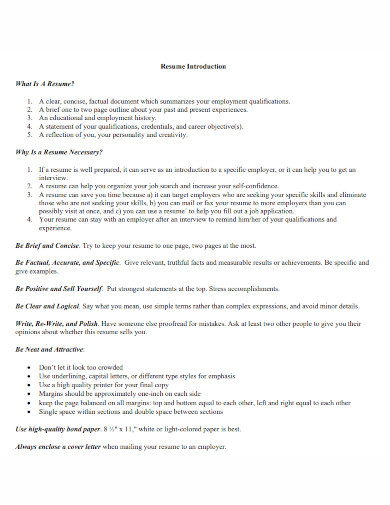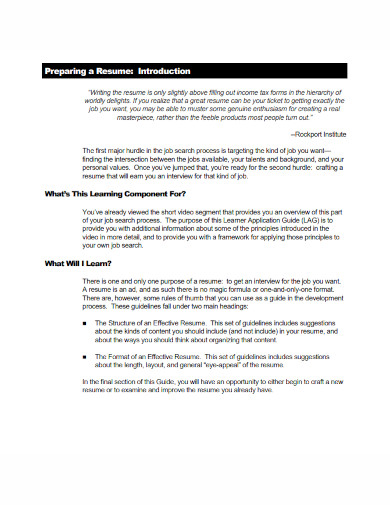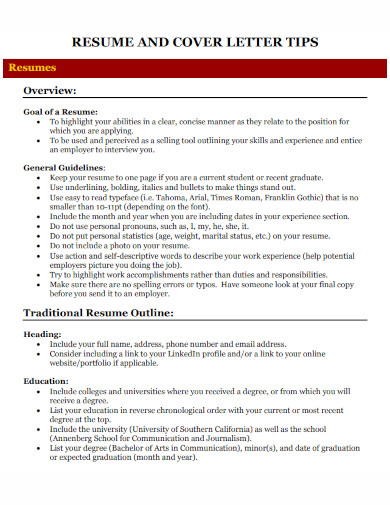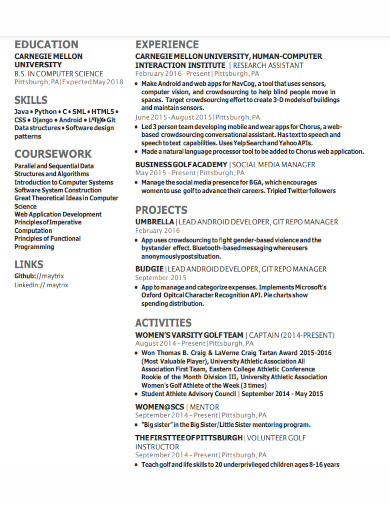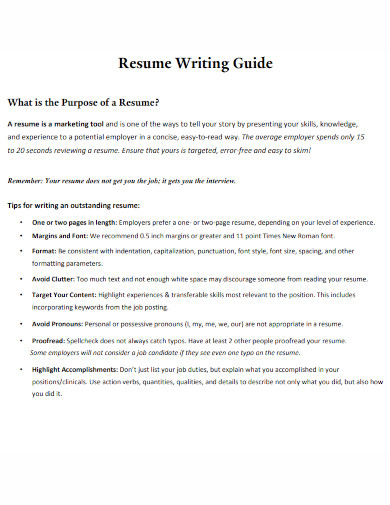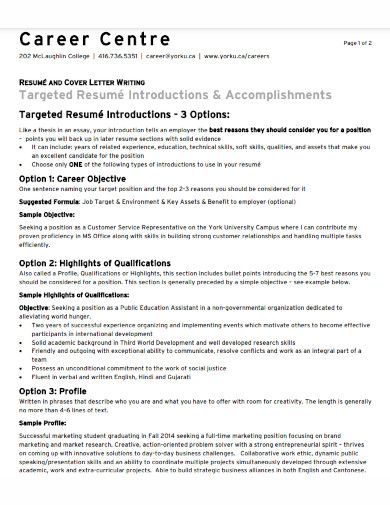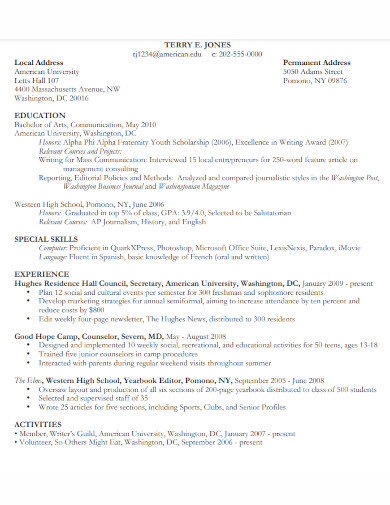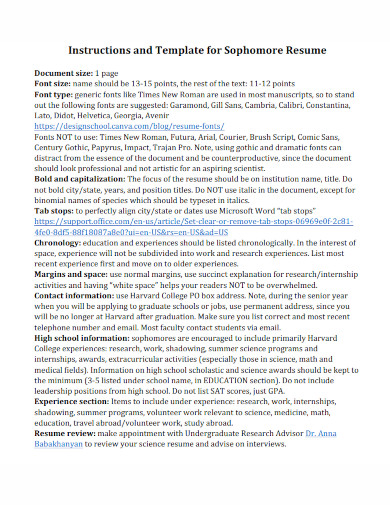10+ Resume Introduction Examples to Download
A well-made introduction can do a lot of things for you as it sets the foundation for a good impression. This is something we need to keep in mind when we are applying for a job or a position.
1. Resume Introduction Template
2. Cover Letter Resume Introduction
3. Preparing Resume Introduction
4. Career Development Resume Introduction
5. School of Computer Science Introduction Resume
6. Resume Writing Guide Introduction
7. HR Resume Introduction
8. Targeted Resume Introductions
9. Chronological Resume Introduction
10. Sophomore Resume Instructions
11. Resume Introduction Writing Tips
What Is a Resume Introduction
A resume introduction is a body of text that is typed down on the body of the resume. This introduction will act as the first body of the text the reader will read through when they look at your resume. A good introduction can go a long way.
How to Write a Resume Introduction
A well-written resume introduction can set a good foundation for a lasting first impression, which will increase your chances of moving to the next step in the hiring process. If you want more references you may read and use any of the resume introduction templates, formats, examples, and samples.
1.) Create an Outline
Begin by creating an outline of your resume introduction. This outline should only span one paragraph, which means you are only limited to providing three to five sentences. The longer the resume introduction the less likely you will obtain the attention of the reader, and they will most likely skip through your introduction.
2.) Introduce Yourself
After you have created an outline, you will begin with your first sentence in the paragraph. This sentence should briefly introduce yourself, a few of your core values, and your history. You may let this portion span one to two sentences depending on the content you wish to write about yourself. This will be the resume introduction statement and will set the tone of the whole resume.
3.) Avoid Giving too Much Extraneous Detail
One thing you have to avoid when you are writing the resume introduction is giving too much extraneous details about yourself. This will include hobbies, and more of the like, these things contribute little and might lose the attention of the reader.
4.) Write Your Accomplishments and Goals
When you have finished writing down your introduction, you must pace out the accomplishments and goals you have made during your career. You may also include your objectives in life, as this can help inform the hiring manager of your intentions and prospects. These accomplishments and goals should be something related to the position you are applying for.
5.) Write Your Interest in the Position and the Business or Company
The last two sentences in the resume introduction should encapsulate your interest in the position and the business or company you are applying for. These sentences will help show your enthusiasm and knowledge of the position and the business or company you are applying to.
FAQs
Do you need to write an introduction for your resume?
No, you don’t need to write an introduction for your resume. This is because the introduction is an optional part of your resume, and only serves as a preface for your resume. Not only is the resume introduction optional, but it is also superseded by either a cover letter or an email. This doesn’t necessarily mean that you will not use or write a resume introduction when you are sending your resume either through email or with a cover letter. You may use your resume introduction and use it to enhance the cover letter or email accompanying your resume.
Who will read the resume introduction?
The hiring manager and any related parties will be the ones to read the resume introduction you have sent. This is because the hiring manager will be the one to act as the first filter that will sieve you towards the company and business you want to be a part of. Afterward, the hiring manager will send your resume to any related upper management to be the one to make the final decision on whether or not you will proceed to the next step of the process. Some companies or businesses have their unique hiring process which might change the flow of the hiring process.
Resume introduction vs. cover letter; what is the difference between a resume introduction and a cover letter?
A resume introduction is an introduction written by the prospective employee on the body of the resume to help enhance their first impression. While a is a separate letter that accompanies a resume, which explains introduces and explains the reason why the prospective employee wants to work in the business or company they are applying for. Both of these documents are optional when you are applying for a specific position or job, but both are pleasantries that can help improve and set your first impression. Most of the time prospective employees only create a cover letter or a resume introduction, but both are not mutually exclusive.
A resume introduction is a body of text on a resume that introduces the prospective employee. This text is used to help set the first impression and acts as the first thing the hiring manager will read when reviewing your resume. In conclusion, a resume introduction is a good way to create a first impression and can be used in conjunction with a cover letter or an introductory email.


